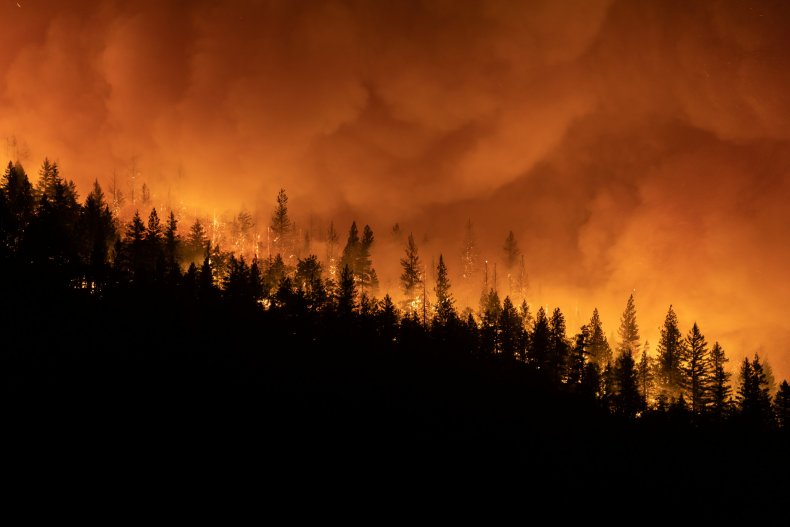Wildfires Across U.S. Have Burned 1 Million More Acres Than at This Point Last Year
Wildfires across the United States have burned more acres so far this year than at the same point in 2020, according to a new report.
The National Oceanic and Atmospheric Administration (NOAA) announced Monday that in the first seven months of 2021, nearly 3 million acres have been destroyed due to 37,650 fires.
"This is nearly 1 million more acres than were consumed by this time last year and about 1 million fewer acres burned than the 2011-2020 year-to-date average," NOAA said in its monthly report.
NOAA said wildfire activity exploded across portions of the West, especially the Northwest, as the region was plagued by drought conditions and record-breaking heat waves. Heavy smoke from the blazes has contributed to low air quality across the country.
Even more acres have burned since July 31, as there is currently wildfire activity in 15 states across the country. According to the National Interagency Fire Center, there is a high potential for severe wildfire activity throughout the western U.S. through the rest of summer and into the fall.
Over the weekend, the Dixie Fire became the largest single fire in California history.
The Dixie Fire has destroyed 489,287 acres of land while only being 21 percent contained, according to California Department of Forestry and Fire Protection (Cal Fire). The number of structures destroyed by the fire has now grown to 627, while 42 more were damaged.
The blaze decimated much of Greenville, a mountain town located in Northern California. Three-quarters of the town was destroyed by the flames, according to federal fire officials.
Governor Gavin Newsom said the state has to do more forest management and vegetation management after surveilling the damage in Greenville.
"At the end of the day though we also have to acknowledge this: the dries are getting a lot drier, the heat and hot weather is a lot hotter than it's ever been," Newsom said. "Extreme weather conditions, extreme droughts are leading to extreme conditions and wildfire challenges the likes of which we've never seen in our history."

"These are climate-induced wildfires," the governor added.
According to NOAA, temperatures in the month of July were above average or record-breaking across the West as well as parts of the mid-Atlantic and Southeast. Precipitation was also below average across much of the Northwest region.
Four states—California, Nevada, Oregon and Washington—had their warmest July on record. Five other states across the West and northern Plains record a top-10 warm month.
Newsweek reached out to NOAA for additional comment, but didn't receive a response before publication.

